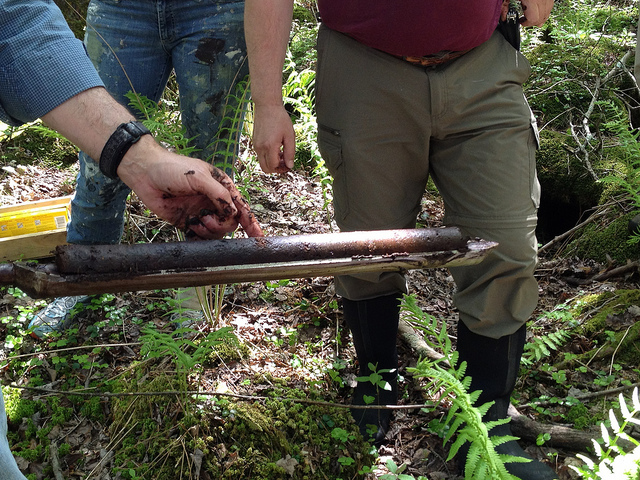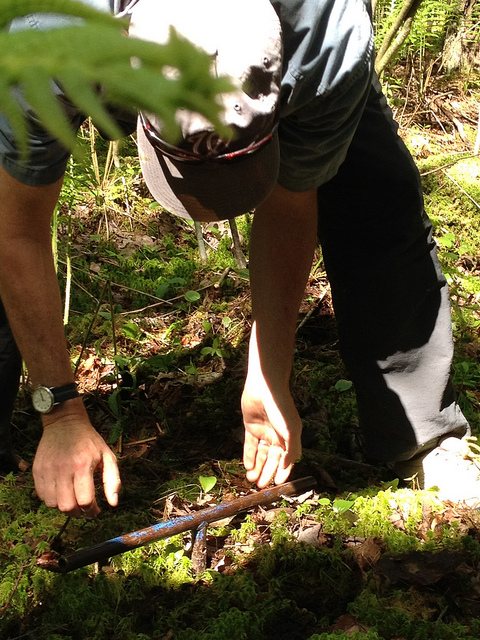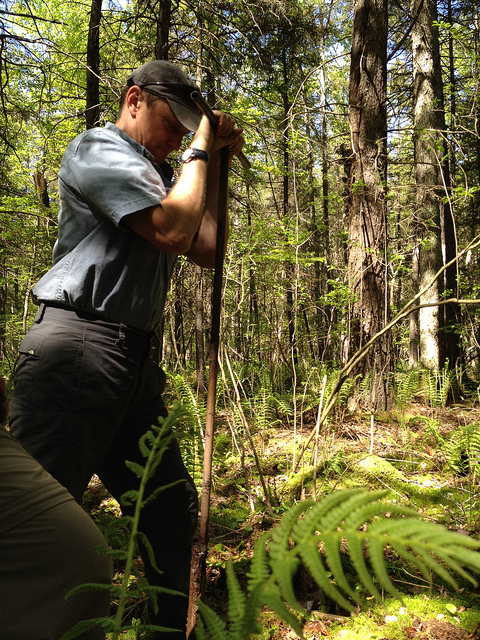
Photo:Eric Niiler
Two reasons. First, in a plant-filled swamp, roots often get in the way and it's rather hard to get the leverage to push through them. Turns out, I am very good at finding roots and I do not have a lot of upper body strength. (See video for details.)This is not as easy as it sounds.
Photo: Eric Niiler
On Saturday, we walked into the Forest's Blackgum Swamp to take core samples out of the muck. There was no standing water in this swamp, at least not when we visited. But I wouldn't call the ground "solid", either. Instead, it was more like a moss-covered sponge. With every step, the ground beneath me would sink and smoosh. In some of the lower patches coach outlet, that meant a shoe-full of water. In other spots, it was just a disconcerting sensation.
In these final two shots, Harvard Forest director David Foster and scientist Rich McHorney open the cylindrical chamber and move a fresh core from the tool to a plastic wrap sheath.
I spent last weekend in the Harvard Forest, participating in hands-on science experiments as part of the Marine Biological Laboratory's science journalism fellowship. The goal was to give us an inside look at what, exactly, scientists actually do. When you're reading a peer-reviewed scientific research paper, where did all that data come from?

In this series of photos, you can see journalist Eric Niiler, one of my co-fellows in the program, push the coring tool into the ground and begin to take it back out. Bear in mind, this is early in the process. The handle was MUCH longer than this by the end.
Read the rest of my series of dispatches from the Harvard Forest

Thanks to Eric Niiler for filming this!
Video Link
Second, as you get deeper, it becomes harder and harder to pull the coring tool back out of the hole. First off, there's the handle. Each extension adds weight and unwieldiness. Then, there's the swamp itself—water-saturated mud that forms a suction around the coring tool. By the end, it took three people to remove the tool from the ground—two to pull it out, and one to catch the comically tall handle as it emerged from the Earth. When the tool came out of the ground, it came with a gush of water, like we'd just struck oil, and indescribably hilarious squirpple-plushhh-blurp sound.



Photo: Eric Niiler
Taking core samples involves a little machine that's like a cross between a shovel and a straw. Made of heavy, solid metal, it has an extendable handle on one end. At the other, there's a hollow, cylindrical chamber that can be opened and closed by turning the handle counterclockwise. You drive the chamber into the ground, turn the handle, and then pull it back out. Once everything is back on the surface, you can open the chamber and see a perfect cylinder of earth, pulled up from below. That cylinder is removed from the chamber, wrapped in plastic wrap, labeled, and put in a long wooden box. Then you do all of that again, in 50 centimeter increments, until you hit stone. We got to about 475 centimeters—15 feet deep. By that point, you'll have collected 1000s of years of layered sediment.
Sometimes, it comes from a swamp.

没有评论:
发表评论